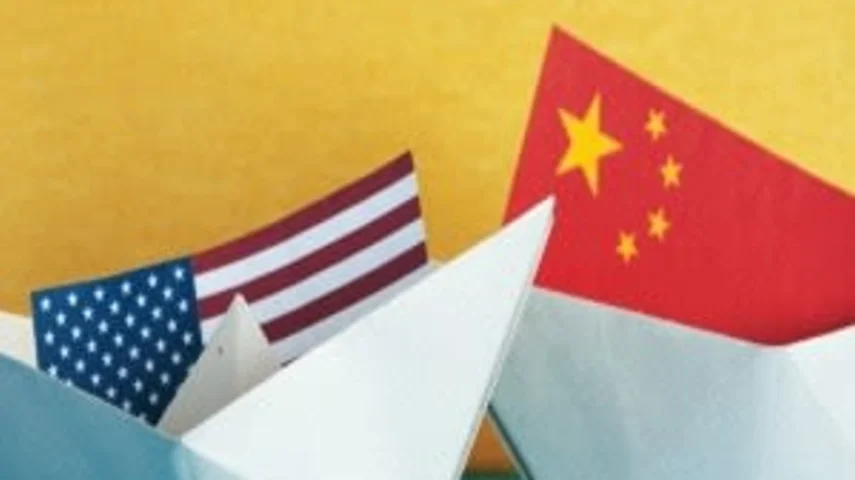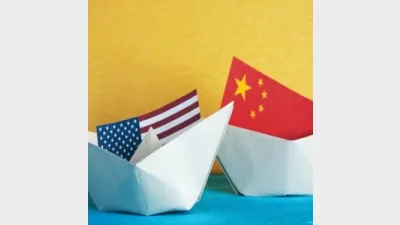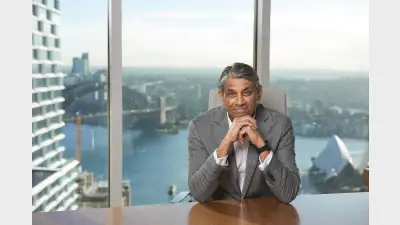The ‘Rest of the West’ and viewing the world through new lenses



We should realign our thinking to the East and accept the ‘rest of the West’ to allow actual global change, Jonathan Wu writes.
With 2017 now in full swing, we have suddenly been plunged into a world of incredible uncertainty.
Volatility has become a daily news item where we wake up to see what the ‘great’ Donald has tweeted overnight and which sectors and markets reacted violently.
What seems to be lost amongst what has become the norm across newswires is that China is only being highlighted for the risks that are supposedly related to the South China Sea, the status of their ‘currency manipulator’ award, and the well anticipated trade war to come with the US.
I would like to discuss these issues in a broader context compared with what we are reading daily and provide some analysis as to what that means for the world, investment markets, and how we should re-align our thinking to the East and allow the ‘Rest of the West’ to begin, which in itself is not a bad thing.
Macro outlook
Let’s start with a macro outlook for China. Moving on from the standard talk about what growth rate China might achieve for 2017, let us consider China 2.0 – being the transition of the old industrial economy to one driven by consumption through services.
Unfortunately, over the last decade there has been a continual thirst to source a particularly negative set of economic data to prove the ultimate demise of the economic giant.
I believe that it is about time our mindsets changed to at least try to comprehend the size and diversity of the country (did you know that if you overlaid China’s land mass over Europe, it is about the same size? How diverse is Europe?).
As part of the 2.0 mission, China is embarking on creating its own new financial system. What we need to remember is that while the West continues to criticise the way they are going about creating this system, China never asked for their opinion on the matter in the first place.
The West focuses on tight capital controls, and lack of free market capitalism. However, China is using a measured and gradual approach to opening their markets which avoids the overheating encountered in the West through the joys of deregulation.
A great example of this gradual approach is through their stock market whereby it has slowly opened a two way channel to trade shares between Hong Kong and the mainland via the Shanghai – HK Stock Connect program, which was recently followed by the Shenzhen – HK Connect program.
Now I’m not here to state ‘alternate facts’ by claiming the programs were volatile or risk free, but China does continually revise its reforms, allowing them to adapt to new market conditions.
We must also re-frame our interpretations of Chinese planning. Can you predict what will happen in the US or even Europe over the next five years? Of course not! But China has a five-year plan, provided the framework for leaders to adhere to, and a roadmap for its citizens in achieving reforms to benefit the population at large.
The US and China Relationship
No reader of this article could not recite Donald Trump’s slogan for the American economy, but let me ask, do you know what Xi Jinping’s motto for the Chinese economy is?
It is the “great rejuvenation of the Chinese nation”.
One of the advantages that China has over the US is that both China’s fiscal and monetary policy is in sync. So what do we mean by this? When the PBOC (People’s Bank of China) wants to turn on the tap, it does so very quickly and it is done by new money directly injected into the economy into the sectors that the central government targets.
The same can be said for fiscal policy where the control and command framework for government truly shines.
If the central politburo wanted to build infrastructure, they would. If they wanted to build a new city focused on sustainability and environmentally friendly initiatives, they would. Contrast this to the US.
The US Federal Reserve is fundamentally separated from the executive branch of government and since 2015 the world has continually held economist consensus surveys as to when they may start raising rates.
Furthermore, remember Trump’s ambitions of building infrastructure? Can he simply do it the same way China does by hitting the ground running? Good luck… even with both houses under Republican control.
Moving onto the issue of trade, and an impending trade war for that matter, we all need to accept that the US isolationist policies are not good for the country or the world long-term.
Based upon the Donald’s threat of implementing a 45 per cent tariff on Chinese imports into the US it could hit Chinese exports by up to 60 per cent or US$270 billion ($352 billion), but if you think that would happen with a flick of a switch you would be sadly mistaken.
In today’s world of globalisation, supply chains are becoming ever so complex and combining this with many exports being of a technological nature, how it would practically work is very hard to see.
Furthermore, if you think China would just accept this tariff (if it was to be implemented) lay down and play dead, you would be dead wrong. If history is any indicator, over the last five years, there have already been trade wars ranging from chickens to tyres.
In September 2016, the US decided to impose tariffs on steel imports and China responded in October by extending duties on imports of textile chemical caprolactam from the US.
At the latest Davos World Economic Forum, we saw a rather interesting event of President Xi Jinping recommitting China to globalisation and free trade.
I view this as one of those watershed moments where the world’s tectonic plates started silently shifting, signalling change.
President Xi went as far as likening protectionism to “locking oneself in a dark room”. Given Donald’s domestic agenda and hostility against climate change, China has positioned itself as taking the baton to lead both global trade and environmental policy agendas.
Further, since Trump took office, China and Germany have begun talks – specifically between Chinese Premier Li Keqiang and Chancellor Angela Merkel. Both share the same aim of stabilising global trade.
Remember China’s “one belt one road” policy? Let it be clear that the Chinese leadership is not making everyone guess what they want to achieve and how they will do it (unlike the US), they want to open up the paths of trade to benefit all who sit along this belt – from China all the way through to Europe.
From a local perspective, Australia needs to make a definitive and committed decision soon as to who it wants to hitch its wagon to over the next century (both economically and investment wise).
We have battled for long enough internally about who our allegiances lie with and while it is clear which one serves Australian interests over the long-term, will we actually make it?
For all intents and purposes, without the US at the table and lacklustre interest by China, the Trans-Pacific Partnership (TPP) is dead in the water.
But what is the alternative? Has anyone heard of the Regional Comprehensive Economic Partnership (RCEP) being publicised? If you thought China was going to be happy picking up the scraps left by the TPP, think again.
The RCEP is China’s alternative to the TPP which has been brewing for some time given the US’ push-back for China’s inclusion in the TPP.
During last November’s 21 member Asia-Pacific Economic Cooperation (APEC) economic leaders meeting in Peru, President Xi reaffirmed that China and the members of the Association of Southeast Asian Nations (ASEAN) invited with open arms any TPP member nations that wanted to join the RCEP.
Moving slightly from trade and into the world of forex markets, remember when Trump on his campaign trail stated clearly that he would name and shame China as a “currency manipulator” on day one of his presidency? It never happened but has anyone bothered to analyse why?
The criteria set by the Treasury department as to what constitutes a currency manipulator are:
• A bilateral trade surplus greater than US$20 billion ($26 billion);
• A current account surplus above three per cent of GDP; and
• Persistent one-sided FX intervention.
Currently, China only fulfils one of the three criteria as its trade surplus by last count was greater than US$250 billion.
China currently runs a small current account deficit and is in fact trying to keep its RMB higher, not lower. The more promises Trump doesn’t follow through on, the more it will lead everyone recalling the classic story of the boy who cried wolf.
The final piece of the Sino China relationship that needs to be discussed is with regards to the South China Sea. Conflict risk is high here, but what truly astonishes me is that while Trump has provided rhetoric to the point that the US is no longer the global policeman, they still want to meddle in matters where they have no business?
What would you think if China started sticking its nose into the US conflict with Mexico on the wall and deployed forces defending Mexico? Would you find that absurd? Just let that sink in for a while… and consider taking off the rose coloured glasses when looking at the US.
Investment implications and strategy for 2017
So what implications does this all have for investing into the region?
Firstly, if we reflect upon what happened to the Chinese equities market in 2016, it was one which had taken a lot of volatility.
If you refer to Chart 1, I have split 2016 market performance on a quarter-by-quarter basis.
Rational behaviour was only exemplified in Q3 where the macro risk outlook seemed to have tapered off somewhat.
In all of the other quarters, it was either a matter of a continually swinging lever of risk on or risk off, or the impact of hot flows in and out of the region.
As you can see, both the HSI and MSCI China indices finished off the year pretty much where they started (albeit a slight positive return), but investors had to endure through all the volatility in the meantime (hence the rise of the term “return free risk”).
At a stock level, the strategies that benefitted most last year were ones which targeted traditional “defensive” stocks such as TSMC (in Taiwan), HSBC, and MTR (in Hong Kong) which while they rallied strongly, were amongst some of the most expensive (and irrational trades) and ones which value managers stayed away from.
This is reflected in Chart 1 where the HS Composite Small Cap Index lagged the performance of its large cap sibling. We believe the trend is set to reverse in 2017 given a somewhat less volatile outlook (compared to last year).
Structural reforms are something we are a big advocate of, which allows us and our managers to see catalysts for investment.
Hong Kong is one of those rare markets globally which does not suffer from home market bias (for better or for worse). This means that when hot money comes in and out of the HKSE, there is no stabilising buffer like we have in Australia or the US.
While this does increase volatility, it also means that when upward swings occur, they are rapid in nature.
From a local investor’s viewpoint, it would be wise to invest in Greater China equities with a long-term focus and accept that timing the market is an exercise in futility.
In the medium-term, we see one stabilising factor which to date I have never seen any local analyst discuss – mainland monies.
Earlier in this piece, I touched on both the stock connect programs which started allowing capital to cross borders between Hong Kong and China bourses.
Flow figures show that since the programs were launched, there has been a net inflow from China of USD$45 billion via the connect programs.
Mainland firms are falling over each other trying to access cross border trades and this will be a strong investment theme in the future. As a value manager, this positions us well for the influx of monies over time.
The conclusion to this is that China will act as the stabiliser for Hong Kong with insurance and sovereign monies looking for a long-term home across the border from the mainland – and thus being the catalyst to start building long-term allocations into the region.
We also believe that if fundamental investing returns to favour in 2017, cyclical stocks will provide a strong source of alpha.
Across the Asian region we believe that South Korea (along with its own structural and market reforms), Taiwan, and Greater China present the most opportunities for undervalued stocks.
We see the upcoming earnings season for China equities in March/April as very strong and should reflect positive sentiment for the market.
All companies within current portfolios are either meeting or exceeding their previous earnings forecasts.
As part of the China 2.0 transition, the industrial sector will continue to drag while the services sector flourishes.
Overall, there will be a drag on gross domestic product (GDP) growth, but since when does GDP growth in China factor into an investment thesis (it’s not like we do that in Australia).
Giving this theme time to play out and allowing the services sector to further penetrate into the everyday economy (from e-commerce to communications) will create a strong baseline for the economy going forward.
The technology sector continues to be attractive albeit it does carry a warning as some of these companies suffer from stretched valuations.
My observations over the last 15 years have continually shown that we as an investment sector are more than happy to take the wealth being generated in China by Chinese companies and the citizens that make up those companies, but conversely are far less willing to invest back into those same companies ourselves (a double standard perhaps?).
This is reflected through pitiful and pathetic asset allocation decisions to Greater China equities and bonds coupled with the nature of hot flows in and out of the markets made by Australian advisers and researchers in general.
Change needs to be embraced and those who are willing to embrace it early will reap the rewards. By accepting the “rest of the West” you are taking your first step in adapting to global change.
Jonathan Wu is the executive director/chief investment specialist at Premium China Funds Management.
Recommended for you
Private wealth firm Escala Partners is seeking to become a leading player in the Australian advice landscape, helped by backing from US player Focus Financial.
In this new series in partnership with MFS Investment Management, delve into all things fixed income and discover how you can use the asset class to build better client portfolios. In this Q&A discussion, MFS managing director- head of wholesale distribution James Langlands sits down with Evidentia senior asset consultant Ron Mehmet to discuss fund selection.
ETF providers are considering the phase-out of bank hybrids in their product development plans with billions of fixed-income assets set to seek a new home in the coming years.
Bell Financial Group co-CEO Arnie Selvarajah believes regulation will make the provision of episodic advice easier for consumers and is pivoting the business over the next two years to focus on wealth management.










